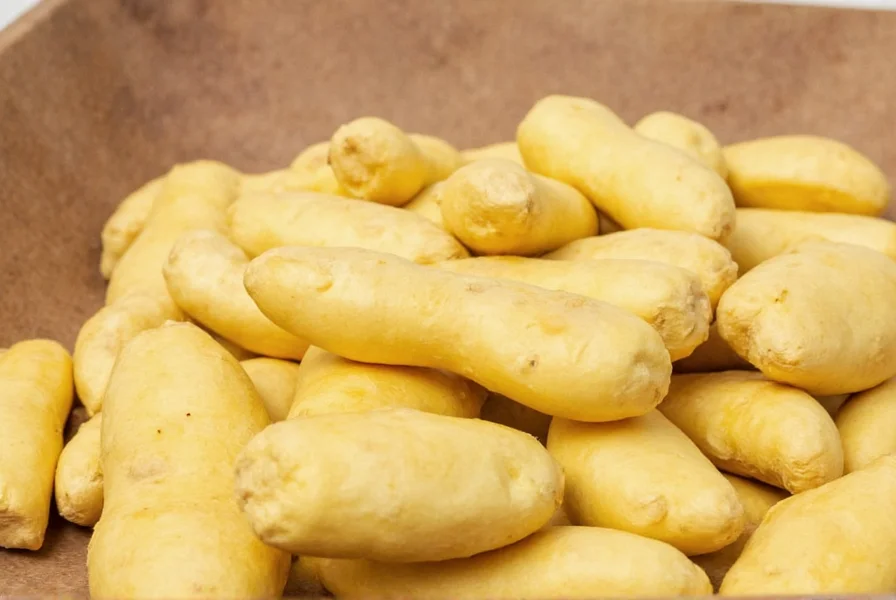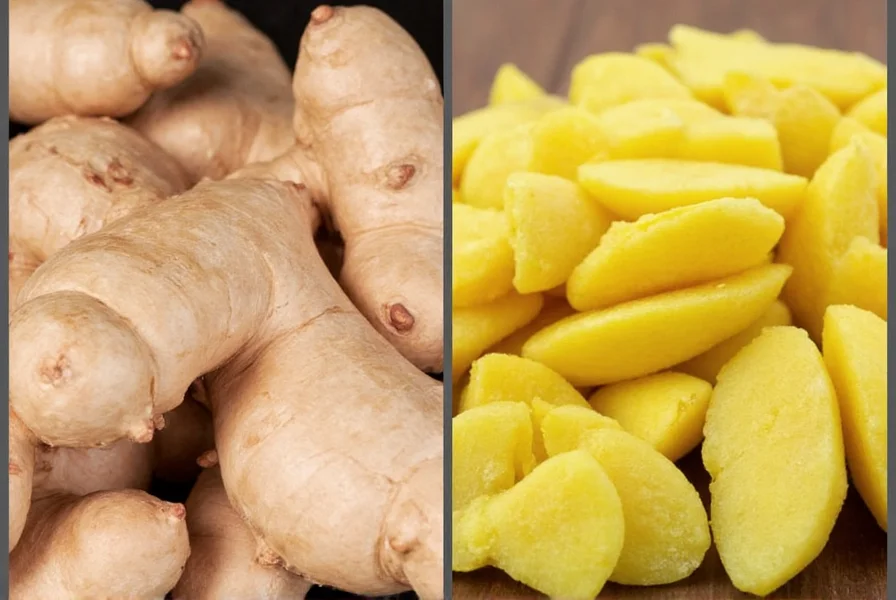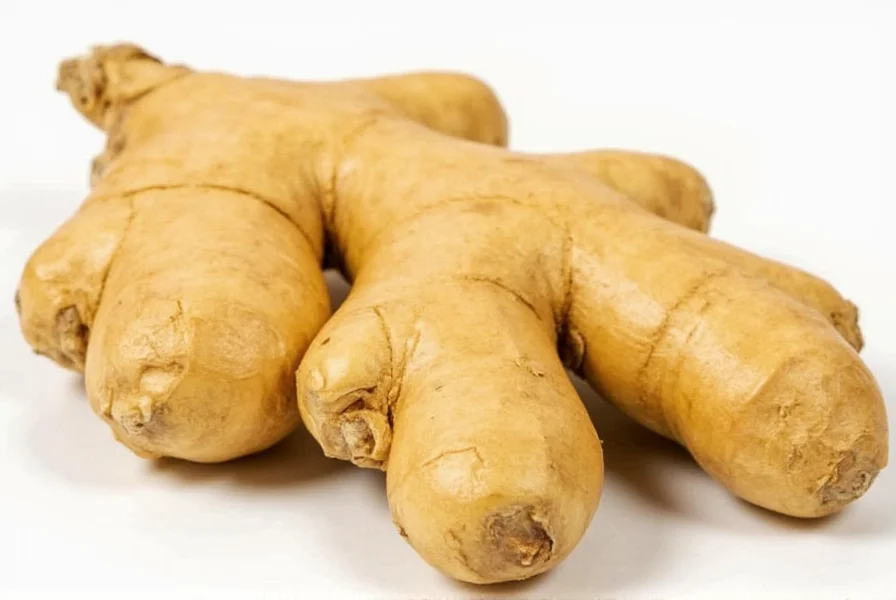When exploring man ginger versus regular ginger, it's essential to understand they're different botanical species with unique properties. While both belong to the Zingiberaceae family, man ginger (Alpinia galanga) contains higher concentrations of certain bioactive compounds like galangin and alpinin that contribute to its distinctive characteristics.
Botanical Identification and Origins
Man ginger, or greater galangal, grows as a perennial herb reaching 6-8 feet in height with long, lance-shaped leaves and beautiful pink and white flowers. The rhizome itself appears more slender and cylindrical than common ginger, with a smoother, paler brown skin and white to pale pink interior. Native to Southeast Asia, it thrives in Indonesia, Thailand, Malaysia, and the Philippines, where it has been cultivated for centuries in traditional agricultural systems.
| Characteristic | Man Ginger (Alpinia galanga) | Regular Ginger (Zingiber officinale) |
|---|---|---|
| Scientific Name | Alpinia galanga | Zingiber officinale |
| Flavor Profile | Sharper, more pungent with pine/citrus notes | Warmer, sweeter with pronounced heat |
| Rhizome Appearance | Longer, smoother, paler brown skin | Knobby, thicker, darker brown skin |
| Key Bioactive Compounds | Galangin, alpinin, galangalol | Gingerol, shogaol |
Traditional Medicinal Applications
Traditional medicine systems across Asia have utilized man ginger for various purposes. In Ayurvedic medicine, practitioners have documented man ginger health benefits for digestive support and respiratory wellness for centuries. Thai traditional medicine employs it for treating nausea and improving circulation, while Indonesian healers have incorporated it into formulations for joint health.
Unlike common ginger which primarily contains gingerols, man ginger's unique composition includes higher levels of diarylheptanoids and flavonoids that may contribute to different physiological effects. Research on man ginger medicinal properties suggests potential anti-inflammatory and antioxidant activities, though more clinical studies are needed to confirm these effects in humans.

Culinary Uses Across Cultures
Understanding how to use man ginger in cooking reveals its importance in Southeast Asian cuisine. Thai tom kha gai (coconut soup) relies on man ginger for its distinctive flavor profile, while Indonesian rendang and Javanese dishes feature it prominently. Unlike regular ginger which can be used raw in many applications, man ginger typically requires cooking to mellow its intense flavor.
When substituting between these rhizomes, note that man ginger versus regular ginger isn't a 1:1 replacement. Man ginger's sharper profile means you'll typically use less—about two-thirds the amount of regular ginger when substituting. For authentic Southeast Asian recipes, using the correct rhizome makes a significant difference in achieving traditional flavor profiles.
Modern Research and Potential Benefits
Recent scientific interest in man ginger has focused on several potential health applications. Studies examining man ginger anti-inflammatory properties have shown promising results in laboratory settings, though human clinical trials remain limited. Research published in the Journal of Ethnopharmacology suggests compounds in man ginger may support digestive enzyme activity.
When considering man ginger for digestive health, it's important to note that while traditional use supports this application, scientific evidence remains preliminary. Unlike common ginger which has substantial research backing its anti-nausea effects, man ginger's specific digestive benefits require more investigation.

Selecting and Storing Man Ginger
Finding authentic man ginger can be challenging outside Southeast Asia. Look for firm rhizomes with smooth, pale brown skin at Asian grocery stores—often labeled as "galangal" or "laos." Proper man ginger storage techniques involve keeping it in a cool, dark place where it will last 2-3 weeks, or freezing it for longer preservation.
When fresh man ginger isn't available, some specialty stores offer dried powder or frozen versions. For those seeking man ginger substitutes in recipes, a combination of regular ginger and a small amount of fresh lemon grass can approximate its flavor profile, though the result won't be identical.
Safety Considerations
Man ginger is generally recognized as safe when consumed in culinary amounts. However, those with specific health conditions should exercise caution. Individuals taking blood-thinning medications should consult healthcare providers before consuming man ginger in medicinal quantities, as preliminary research suggests potential interactions.
Unlike common ginger which has extensive safety data, comprehensive safety information for man ginger in therapeutic doses remains limited. Those exploring man ginger supplement benefits should proceed with caution and seek products from reputable sources that provide transparency about ingredients and processing.
Conclusion
Man ginger represents a distinctive botanical with rich cultural significance across Southeast Asia. Understanding the differences between man ginger versus regular ginger helps consumers make informed choices for both culinary and potential wellness applications. While traditional uses suggest numerous benefits, further scientific research will help clarify its specific health applications and optimal usage.
Frequently Asked Questions
What is the difference between man ginger and regular ginger?
Man ginger (Alpinia galanga) and regular ginger (Zingiber officinale) are different botanical species. Man ginger has a sharper, more pungent flavor with pine and citrus notes, while regular ginger has a warmer, sweeter heat. Visually, man ginger rhizomes are longer, smoother, and paler with white to pink interior, compared to regular ginger's knobby, darker appearance with yellow interior.
Can I substitute man ginger for regular ginger in recipes?
Substitution isn't direct due to flavor differences. Man ginger has a sharper profile, so use about two-thirds the amount of regular ginger when substituting. For authentic Southeast Asian dishes, man ginger provides distinctive flavor that regular ginger cannot replicate. In Western recipes calling for ginger, man ginger may create an unexpectedly intense flavor.
Where can I find man ginger?
Man ginger (often labeled as galangal or laos) is typically available at Asian grocery stores, particularly those specializing in Southeast Asian products. Larger mainstream supermarkets with extensive international sections may carry it seasonally. Online specialty food retailers also offer fresh, frozen, or powdered forms of man ginger.
What are the potential health benefits of man ginger?
Traditional medicine systems have used man ginger for digestive support, respiratory wellness, and circulation. Preliminary research suggests potential anti-inflammatory and antioxidant properties, though scientific evidence is less extensive than for regular ginger. Most health claims require further clinical research to confirm efficacy in humans.
How should I store man ginger to keep it fresh?
Store fresh man ginger in a cool, dark place where it will remain fresh for 2-3 weeks. For longer storage, wrap it in paper towels and place in a perforated plastic bag in the refrigerator crisper drawer. Man ginger also freezes well—peel, slice, and store in an airtight container for up to 6 months without significant quality loss.











 浙公网安备
33010002000092号
浙公网安备
33010002000092号 浙B2-20120091-4
浙B2-20120091-4